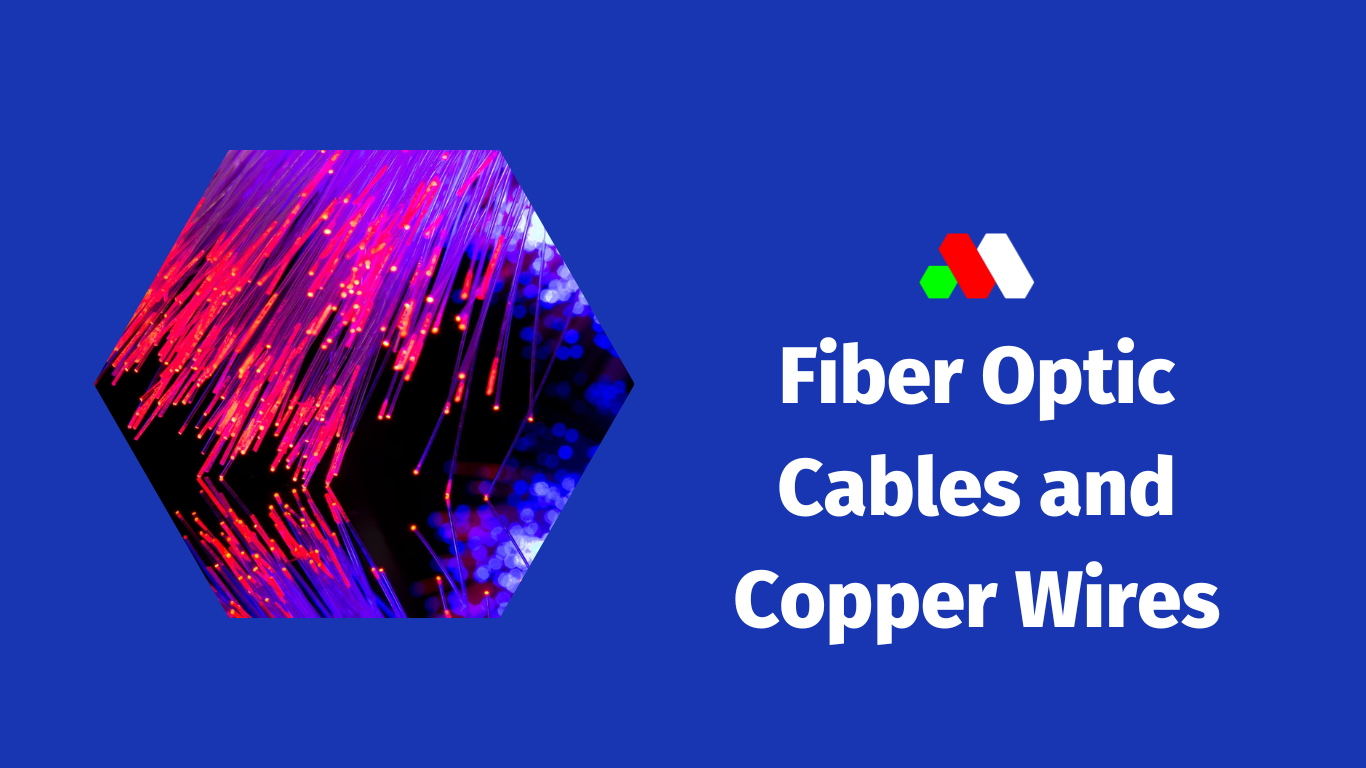
Differences between Fiber Optic Cables and Copper Wires
- Data Carrier:
- Fiber Optic Cable: Transmits data in the form of light (photons).
- Copper Wire: Transmits data in the form of electric signals (electrons).
- Bandwidth:
- Fiber Optic Cable: Offers higher bandwidth, capable of carrying more data at faster speeds.
- Copper Wire: Offers lower bandwidth compared to fiber optic cables.
- Structure:
- Fiber Optic Cable: Thin, lightweight, and smaller in size.
- Copper Wire: Heavier and thicker in comparison.
- Environment:
- Fiber Optic Cable: Can be used in various environments as it is resistant to corrosive materials.
- Copper Wire: More prone to corrosive materials, limiting its use in certain environments.
- Attenuation (Signal Loss):
- Fiber Optic Cable: Has very low attenuation, making it suitable for long-distance transmission.
- Copper Wire: Experiences higher attenuation, limiting its usefulness over long distances.
- Interface:
- Fiber Optic Cable: Not affected by electrical and magnetic interfaces as data travels in the form of light.
- Copper Wire: Susceptible to electrical and magnetic interfaces due to the transmission of electric signals.
- Security:
- Fiber Optic Cable: Provides security against wiretapping as there is no light leakage, making it difficult to intercept.
- Copper Wire: Offers less security against wiretapping as there is signal leakage, making it easier to tap.
- Cross-talk Problem:
- Fiber Optic Cable: Does not suffer from cross-talk problems.
- Copper Wire: Prone to cross-talk issues.
- Effect on Charge Carriers:
- Fiber Optic Cable: Charge carriers are photons (neutral), so they are not affected by charge.
- Copper Wire: Charge carriers are electrons (negatively charged), and they can be affected when moving in a wire.
- Breakability:
- Fiber Optic Cable: Easily breakable.
- Copper Wire: Not easily broken.
Similarities between Fiber Optic Cables and Copper Wires
- Data Transmission: Both are used for data transmission in various applications, including telecommunications and networking.
- Connectors: Both require connectors to establish connections with devices and other cables.
- Power Transmission: Both can be used for power transmission, with fiber optic cables capable of powering some devices using light.
- Types: Both come in different types tailored for specific applications, such as single-mode and multi-mode fiber optic cables and stranded and solid copper wires.
- Installation and Maintenance: Both require proper installation and maintenance to ensure optimal performance and longevity in their respective applications.